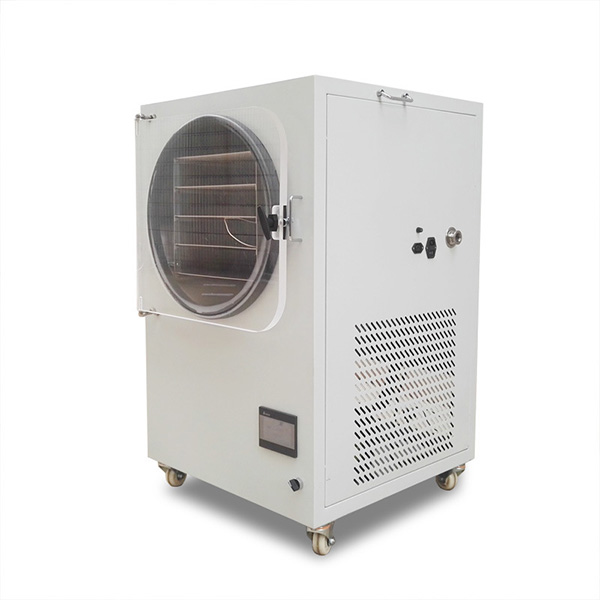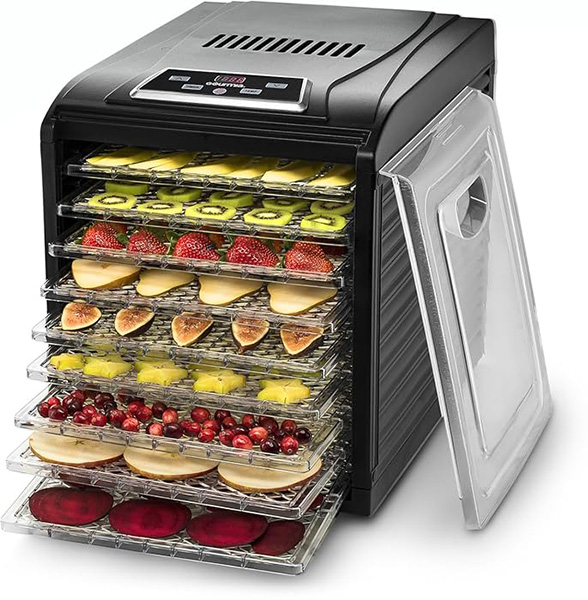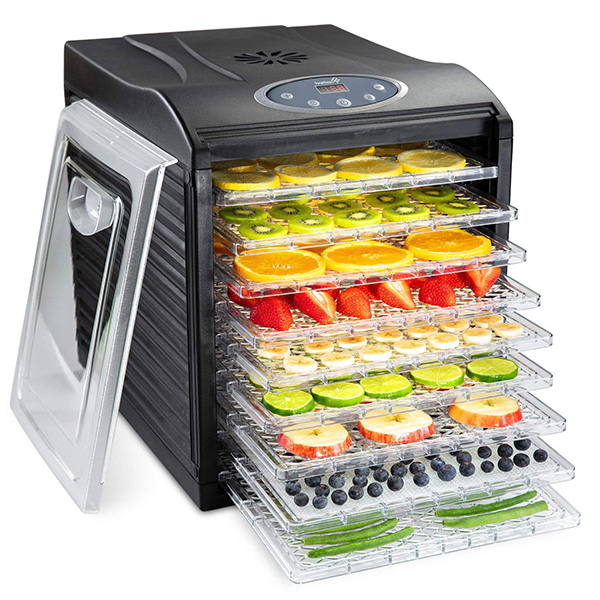
Content Menu
● Introduction to Freeze Drying Technology
● Understanding the Freeze Drying Process
● Types of Freeze Drying Food Machines
>> Home Freeze Dryers
>> Commercial Freeze Drying Equipment
● Applications of Freeze Drying in Food Preservation
>> Freeze-Dried Fruits and Vegetables
>> Meat and Seafood Preservation
>> Dairy Products
>> Ready-to-Eat Meals
● Advantages of Using Freeze Drying Food Machines
● Considerations When Choosing a Freeze Drying Food Machine
>> Capacity
>> Energy Efficiency
>> Ease of Use
>> Maintenance Requirements
>> Cost
● The Future of Freeze Drying Technology
● Conclusion
● Frequently Asked Questions
>> 1. What is the difference between freeze drying and dehydration?
>> 2. How long does the freeze drying process take?
>> 3. Can all types of food be freeze-dried?
>> 4. How do I store freeze-dried foods?
>> 5. Are freeze-dried foods as nutritious as fresh foods?
Introduction to Freeze Drying Technology
Freeze drying, also known as lyophilization, is a cutting-edge food preservation method that has gained significant popularity in recent years. This innovative process involves removing moisture from frozen food under vacuum conditions, resulting in high-quality, long-lasting products that retain their original flavor, texture, and nutritional value. At the heart of this technology lies the freeze drying food machine, a sophisticated piece of equipment that has revolutionized the way we preserve and store food.
Understanding the Freeze Drying Process
The freeze drying process consists of three main stages: freezing, primary drying, and secondary drying. During the freezing stage, the food is rapidly frozen to preserve its structure. In the primary drying phase, the frozen water is removed through sublimation, where ice transitions directly from a solid to a vapor state under vacuum conditions. Finally, the secondary drying stage removes any remaining bound water molecules, resulting in a product with extremely low moisture content.
This gentle dehydration process preserves the food's cellular structure, ensuring that it retains its original shape, color, and nutritional properties. The result is a lightweight, shelf-stable product that can be easily rehydrated when needed.

Types of Freeze Drying Food Machines
Home Freeze Dryers
As the technology has become more accessible, home freeze dryers have gained popularity among food enthusiasts and those interested in long-term food storage. These compact machines are designed for personal use and can process small to medium batches of food.Home freeze dryers typically feature:
- User-friendly interfaces
- Multiple trays for batch processing
- Compact designs for kitchen countertops
- Energy-efficient operation
Commercial Freeze Drying Equipment
For large-scale food production, commercial freeze drying equipment offers higher capacity and more advanced features. These industrial-grade machines are used by food manufacturers, pharmaceutical companies, and research institutions to process large quantities of products efficiently.Commercial freeze dryers often include:
- Large-capacity chambers
- Automated control systems
- Advanced monitoring and data logging capabilities
- Customizable cycle parameters for different products
Applications of Freeze Drying in Food Preservation
The versatility of freeze drying food machines has led to their widespread adoption across various sectors of the food industry. Some popular applications include:
Freeze-Dried Fruits and Vegetables
Fruits and vegetables are among the most commonly freeze-dried foods. The process preserves their vibrant colors, natural flavors, and nutritional content, making them ideal for snacking, baking, and long-term storage.
Meat and Seafood Preservation
Freeze drying is an excellent method for preserving meat and seafood products. It extends shelf life while maintaining the protein content and flavor profile of these perishable foods.
Dairy Products
Dairy items such as cheese, yogurt, and milk can be freeze-dried to create lightweight, shelf-stable products that are perfect for use in camping meals or as ingredients in dry mixes.
Ready-to-Eat Meals
The freeze drying process is ideal for creating lightweight, nutritious meals for outdoor enthusiasts, emergency preparedness kits, and military rations.

Advantages of Using Freeze Drying Food Machines
Freeze drying food machines offer numerous benefits over traditional food preservation methods:
1. Superior Quality Retention: Freeze-dried foods maintain their original flavor, texture, and nutritional value better than other preservation methods.
2. Extended Shelf Life: Properly packaged freeze-dried foods can last for 25 years or more, making them ideal for long-term storage.
3. Lightweight and Compact: The removal of water significantly reduces the weight and volume of the food, making it easy to store and transport.
4. Rapid Rehydration: Freeze-dried foods quickly absorb water and return to their original state, often within minutes.
5. Minimal Chemical Additives: The process requires no preservatives or additives, resulting in cleaner, more natural products.
6. Versatility: Freeze drying can be applied to a wide range of foods, including fruits, vegetables, meats, dairy products, and complete meals.
Considerations When Choosing a Freeze Drying Food Machine
When selecting a freeze drying food machine, consider the following factors:
Capacity
Determine the amount of food you plan to process regularly. Home users may find smaller machines sufficient, while commercial operations will require larger, industrial-grade equipment.
Energy Efficiency
Look for machines with energy-saving features, as the freeze drying process can be energy-intensive.
Ease of Use
Choose a machine with an intuitive interface and clear instructions, especially for home use.
Maintenance Requirements
Consider the ease of cleaning and maintaining the machine, as proper care is essential for longevity and optimal performance.
Cost
Balance the initial investment with the long-term benefits of owning a freeze drying food machine.
The Future of Freeze Drying Technology
As the demand for high-quality, shelf-stable foods continues to grow, freeze drying technology is evolving to meet new challenges. Recent developments in the field include:
1. Hybrid Systems: Combining freeze drying with other preservation methods to enhance efficiency and product quality.
2. Energy Optimization: Developing more energy-efficient processes to reduce operational costs and environmental impact.
3. Smart Controls: Implementing advanced sensors and AI-driven control systems for improved precision and consistency.
4. Novel Applications: Exploring new uses for freeze drying technology in fields such as pharmaceuticals, biotechnology, and materials science.
Conclusion
Freeze drying food machines have revolutionized the way we approach food preservation, offering unparalleled quality retention and extended shelf life. Whether you're a home enthusiast looking to preserve your garden's harvest or a commercial producer seeking to expand your product line, freeze drying technology provides a versatile and effective solution. As the technology continues to advance, we can expect even more innovative applications and improvements in efficiency, making freeze drying an increasingly accessible and valuable tool in the quest for sustainable, high-quality food preservation.

Frequently Asked Questions
1. What is the difference between freeze drying and dehydration?
Answer: Freeze drying removes water through sublimation, preserving the food's structure and nutrients, while dehydration uses heat to evaporate water, which can alter the food's texture and nutritional content. Freeze-dried foods generally retain their original shape and rehydrate more quickly than dehydrated foods.
2. How long does the freeze drying process take?
Answer: The duration of the freeze drying process can vary depending on the food type and quantity, but it typically takes between 20 to 40 hours for a complete cycle. Factors such as the food's water content, thickness, and the efficiency of the freeze drying machine can affect the processing time.
3. Can all types of food be freeze-dried?
Answer: While most foods can be freeze-dried, some are better suited to the process than others. Foods with high water content, such as fruits and vegetables, work exceptionally well. However, foods with high fat content may not freeze-dry as effectively and may have a shorter shelf life.
4. How do I store freeze-dried foods?
Answer: Freeze-dried foods should be stored in airtight containers or moisture-proof packaging to prevent rehydration. Keep them in a cool, dry place away from direct sunlight. When properly stored, freeze-dried foods can last for 25 years or more.
5. Are freeze-dried foods as nutritious as fresh foods?
Answer: Yes, freeze-dried foods retain most of their original nutritional value. The gentle nature of the freeze drying process preserves vitamins, minerals, and other nutrients better than many other preservation methods. However, some sensitive vitamins, such as vitamin C, may degrade slightly during storage.












